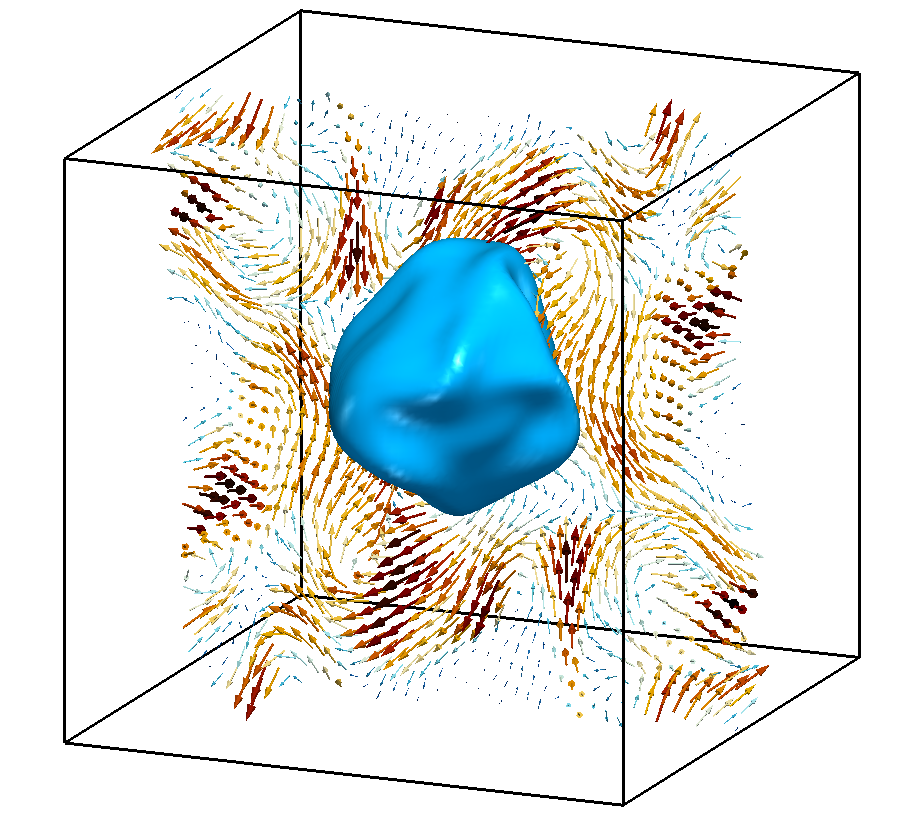Turbulent Liquid-Liquid Dispersions
German physicist Werner Heisenberg is reported to have said, "When I meet God, I am going to ask him two questions: Why relativity? And why turbulence? I really believe he will have an answer for the first." The complexity of turbulent multiphase flows gives rise to numerous fundamental questions of fluid mechanics. Despite the fact that these flows find wide applications in industrial processes and everyday life, they are not well understood. Our research group develops numerical frameworks based on lattice Boltzmann method to perform high resolution direct numerical simulations of liquid-liquid turbulent dispersions and emulsions. We want to reveal how interface between two immiscible liquids evolves in turbulence flow, how the presence of the dispersed phase affects the turbulence characteristics, and how local flow conditions affect the formation of cdrops.

Drop/Surface Interactions
Industry-relevant multiphase systems are typically contained in equipment (pipelines, vessels) such that continuous and dispersed phases interact with the surrounding walls. These walls might have different wettability (hydrophilic, hydrophobic), varying roughness, or with the patterned surfaces. We use direct numerical simulations to study the behavior of drops on various solid surfaces. The flow configurations vary as well, starting from creeping and laminar flows in microfluidics to fully-developed turbulence in a channel. Determination of static and dynamic contact angles, study of a three-phase contact line motion, analysis of the effect of the surfactant on drop behaviour are the key objectives of our research. The primary challenge in such simulations is wetting boundary condition. Cross-validation with experimental observations is a significant part of this direction.

Computational Fluid Dynamics (CFD)
Computational fluid dynamics is a very powerful research tool that is now widely used in the design development of novel devices and machines, flow visualization and quantification, and process optimization. In our group, we use CFD simulations to seek better understanding of multiphase processes occurring in various engineering devices, e.g. static mixers, stirred tanks. Full resolution of complex geometry of these devices (lab, bench scale), does not allow full resolution of the events that occur at the small (micro) scales, for instance, a micron-size drop interaction with an inch-diameter impeller in a stirred tank. Multi-scale simulations are used in this case, when the micro-events are incorporated as sub-models while the flow is resolved on a large scale.
